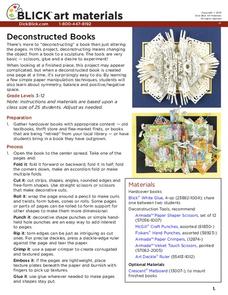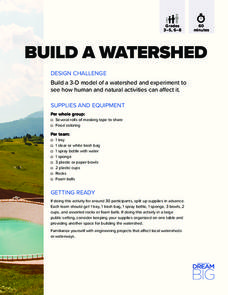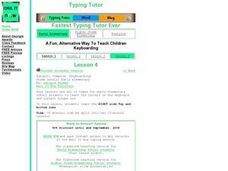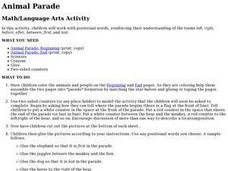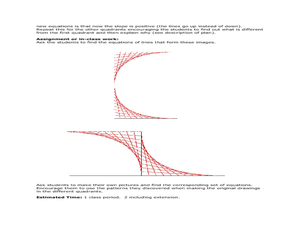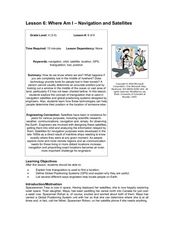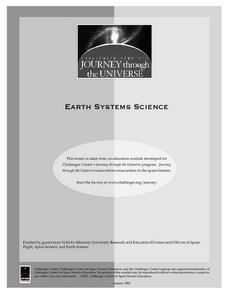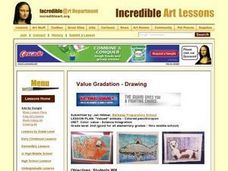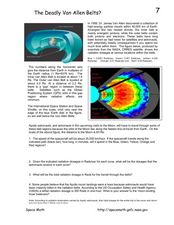Curated OER
How do protons stick together in a nucleus?
Students explain that the Standard Model of the atom includes particles beyond protons, neutrons, and electrons. They describe the nucleus as conglomeration of quarks that manifest themselves as protons and neutrons.
Curated OER
The City in Black and White and Color: An interdisciplinary approach to teaching life in the city using literature, social studies, art, and photography.
Students design an artistic and literary collage of contemporary urban life that seeks to interpret, analyze, and evaluate its mettle. They integrate their impressions of urban life with established views, thereby enriching their...
Dick Blick Art Materials
Deconstructed Books
Scissors, glue, and an old book. Punches, crimpers, and rulers. Kids gather their tools and get set to create relief sculptures by deconstructing books.
Curated OER
Tree Bark
Students explore and display textures of tree bark in a patterned arrangement of positive and negative space. They make crayon rubbings with various colors and arrange them in an original repetitive pattern. They glue finished designs to...
Polk Bros Foundation
Evaluate Decisions
When people and characters make choices, there are positive and negative consequences. Focus on a situation in a text your class is reading and analyze the characters' decisions. There is space in the graphic organizer to write about...
Discovery Education
Sonar & Echolocation
A well-designed, comprehensive, and attractive slide show supports direct instruction on how sonar and echolocation work. Contained within the slides are links to interactive websites and instructions for using apps on a mobile device to...
Curated OER
Riding on a Pendulum
A comprehensive resource gets fourth grade physical scientists making observations about the period of a pendulum and then applying knowledge to a playground swing. Through seven different stations, they will record observations and...
DiscoverE
Build a Watershed
What's the best way to learn how watersheds work? Build one! Combining engineering, the water cycle, and ecology concerns, the activity is the perfect fit for an interdisciplinary unit. Teams construct a model watershed with simple...
Curated OER
Recorder Ensemble
Third graders listen to and identify the lines and space of the treble staff and demonstrate how to sight-read to play the recorder. They answer comprehension questions regarding letter names of the musical alphabet and left and right...
Curated OER
Blast's Cosmic Carnival
Students, after analyzing the history of a concentrator, model how a Genesis spacecraft concentrator works by playing a game. In groups of three or four, after being given materials to work with, are challenged to roll the rubber balls...
Curated OER
Computer: Keyboarding for Kids
Young scholars discover keyboard positions by playing a game on a body-sized keyboard placed on the floor. They learn the key positions by associating them with words easy to remember such as "animals in the snow dig for food," for the...
Curated OER
Our Home in the Milky Way
Learners gain appreciation of the vastness of our galaxy by viewing an applet about the Milky Way. Students hypothesize about how long it would take to get from Earth to Pluto.
Curated OER
View of a Comet from Earth
Young scholars investigate comets. In this space science lesson, students study overhead transparencies of the orbits of Earth and a comet. Young scholars identify various locations and times where comets would be visible from Earth.
Curated OER
Animal Parade
In this activity, students will work with positional words, reinforcing their understanding of the terms; left, right, before, after, between, first, and last.
Curated OER
And a Star to Steer Her By: A Field Trip Guide for the Planetarium Show
In this field trip study guide for the planetarium show lesson plan, students construct a model of the Earth and describe the relative positions of the continents using latitude and longitude. Students construct a star chart to find...
Curated OER
Mathematics of Doodles
Students use the slope and y-intercept to graph lines. For this algebra lesson, students graph linear equations and apply it to solving real life problems.
Curated OER
Where Am I: Navigation and Satellites
Students explore the concept of triangulation that is used in navigation satellites and global positioning systems designed by engineers. They determine ways these technologies can help people determine their position or the location of...
Curated OER
Gateway to the Arts
Students redesign a dead space in the school to create an interesting and stimulating visual environment. In this art design lesson, students look at how to redesign architectural space and research ways to enhance a space. Students then...
Curated OER
Rust Never Sleeps
Young scholars investigate oxidation-reduction reactions involving iron by conducting an experiment in which they expose iron filings to different atmospheric and ocean conditions. They relate the results to the oxidation banding...
Curated OER
Understanding the Rutherford Model
In this Rutherford model worksheet, students read about Rutherford's experiment with gold foil and alpha particles which led to the discovery of subatomic particles. Students answer six analysis questions about the experiment and...
Curated OER
A Shadow of Yourself
Students measure the length of their shadows three times during the day, Students determine the differences in shadow lengths after each measurement. They discuss why the length changed from one time of day to another.
Curated OER
Conditional Probability
In this probability and statistics activity, students use conditional probability to solve for probabilities in a finite sample spaces. The two page activity contains six problems. Answers are provided.
Curated OER
Valued Animals - Colored Pencil and Crayon
Second graders see that pressure of crayon create range of values. They show value range with crayons in an art work. They see how value is used in works of art and explain the importance of animals and their environment.
Curated OER
The Deadly Van Allen Belts?
For this Van Allen Belts worksheet, high schoolers read about the deadly affects of the high energy particle clouds located around the Earth. Students answer 4 questions about the dosages of radiation astronauts receive in the zones of...


